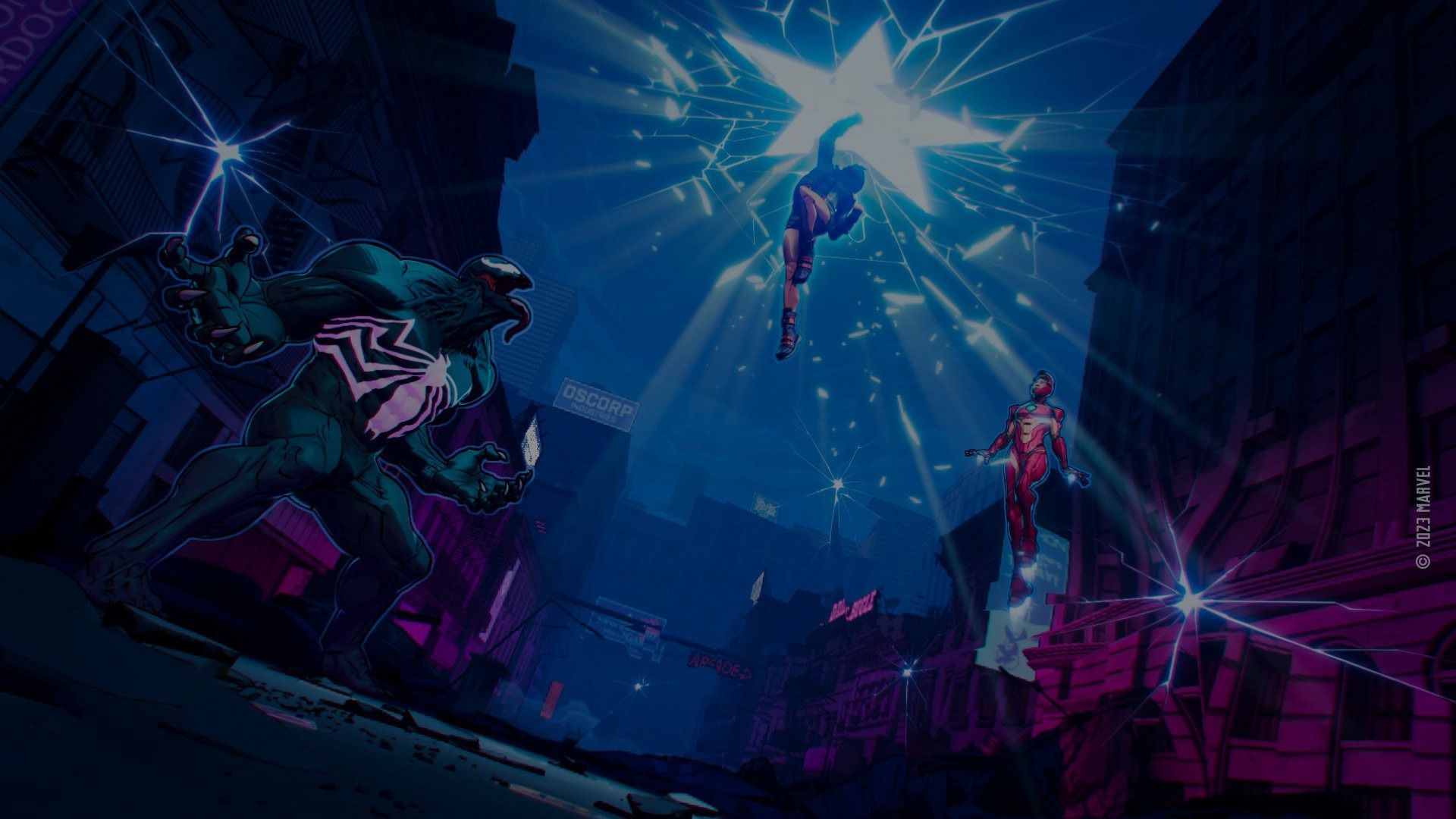
How does the explosively popular MARVEL SNAP stay fueled by updates? Following their experience making Hearthstone at Activision Blizzard, the Second Dinner team chose the Unity ecosystem to streamline content creation and delivery for MARVEL SNAP, their award-winning debut as a new studio.
Creating a scalable build pipeline and backend to support a fast-growing live-service game
Android, iOS, PC
80
Burbank, CA

MARVEL SNAP has 200+ base cards and 1,000+ collectible variants, with new content added weekly. To optimize and deliver this content to millions of players, Second Dinner built an integrated build pipeline combining Unity’s Addressable Asset System with DevOps and backend solutions from Unity Gaming Services (UGS).

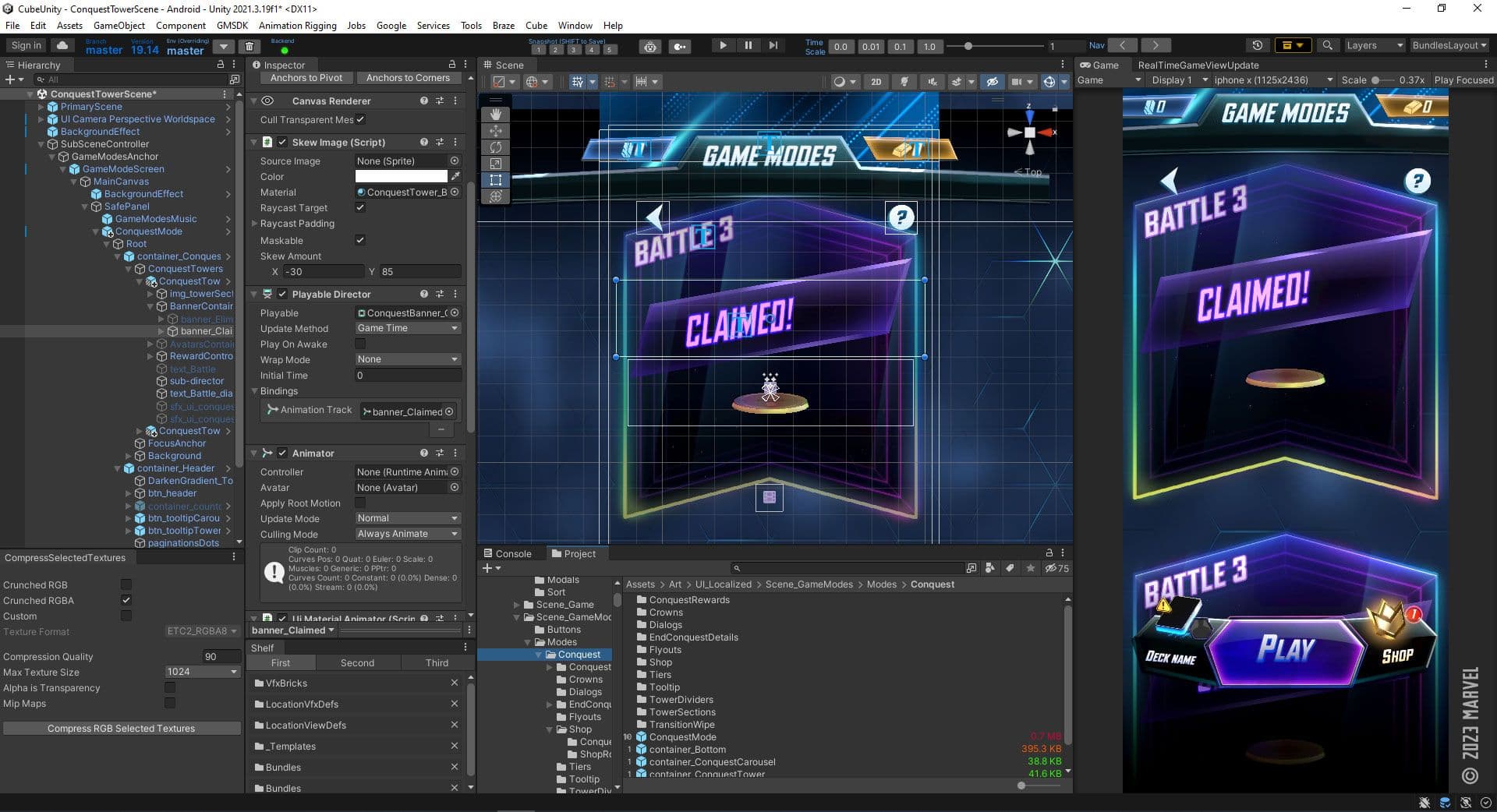
From day one, Second Dinner cofounders Ben Brode and Jomaro Kindred knew they wanted to make a mobile game. They had used Unity for Hearthstone and say continuing the partnership for MARVEL SNAP was “a no-brainer.”
“We love Unity. It makes it so easy to go from nothing to a working thing immediately. We could iterate really fast, decreasing our starting friction, which was huge for us,” says Brode.
Structuring their development pipeline around the Unity Editor and UGS meant they didn’t need an engine team or other boilerplate roles, so they could hire talent to work directly on MARVEL SNAP.
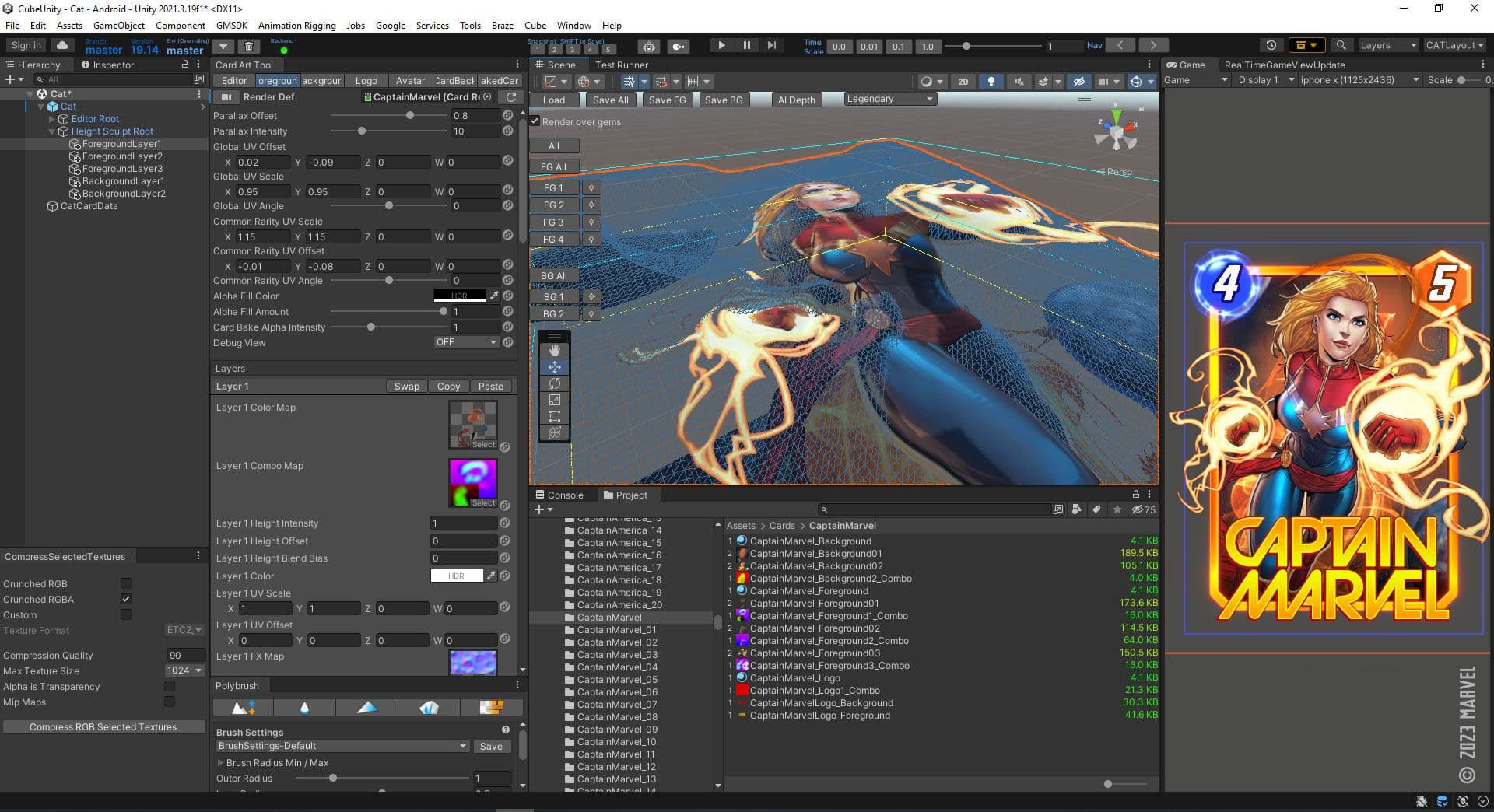
One of Second Dinner’s early challenges was finding a way to create cards that captured the larger-than-life appeal of MARVEL heroes. The art team soon landed on the “frame break,” which sees characters busting out of their card frames to come alive onscreen.
“MARVEL heroes are so massive, so epic… There’s no way they can be contained by a mere card frame!” explains producer Nicki Broderick. “The question was, how do we build tools that unlock the capabilities for our 2D artists to take a 2D asset and make it feel 3D using Unity?”
To supercharge card creation and democratize the process for artists who weren’t familiar with Unity, Second Dinner’s technical artists built a custom Editor tool called the Card Art Tool, or CAT.
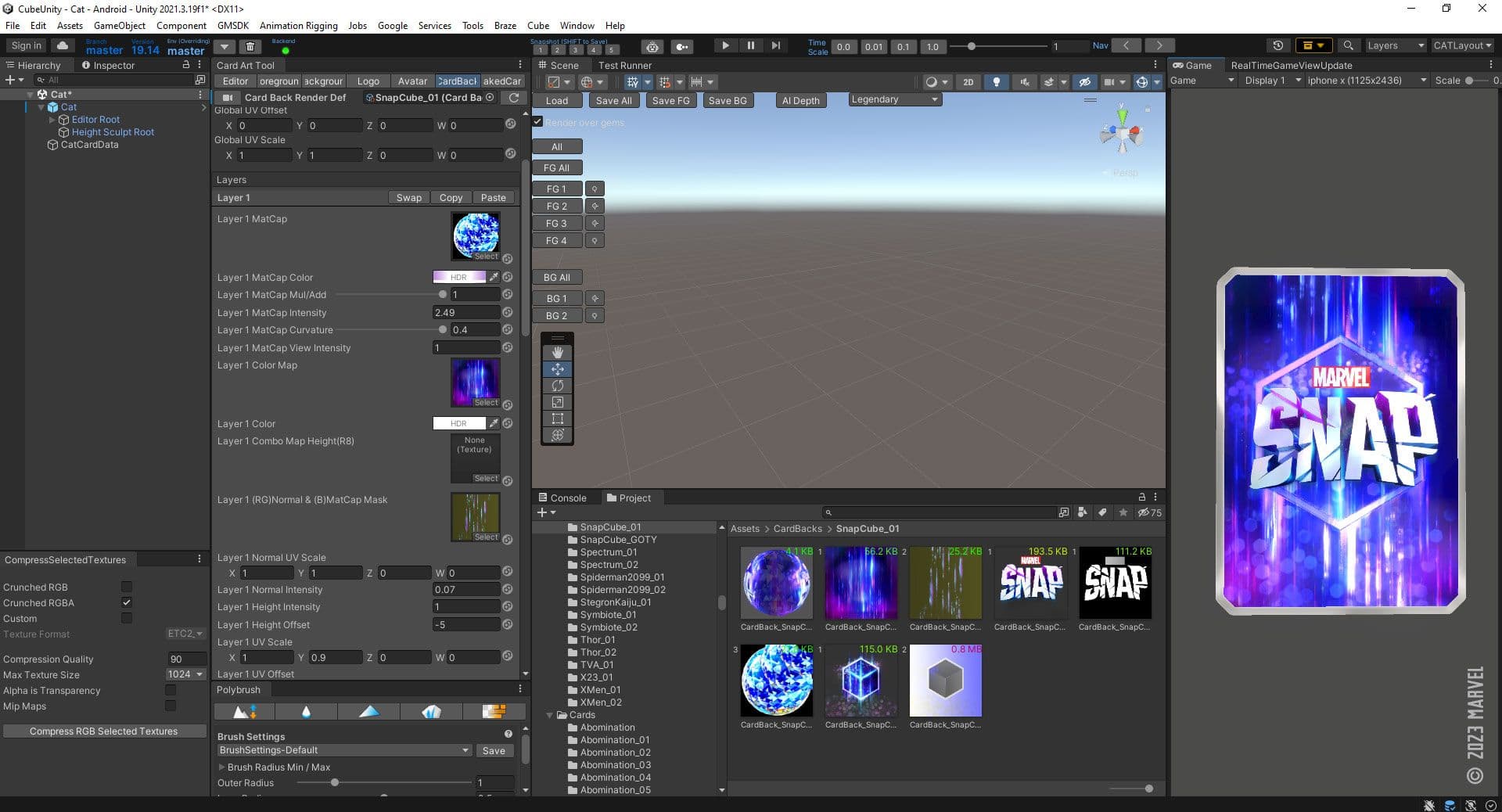
CAT allows Second Dinner’s artists to sculpt, heightmap, animate, and add parallax effects to cards in real-time, without having to export them from the Editor. It became a vital part of the card creation pipeline, ensuring consistency and compatibility across assets and enabling collaboration with more than 80 external artists and inkers.
“We were able to slice out the CAT tool and share it with our external partners to easily onboard them,” says Broderick. “It made the whole process seamless, easy to learn, and quick to iterate. And it was really easy to do in Unity.”
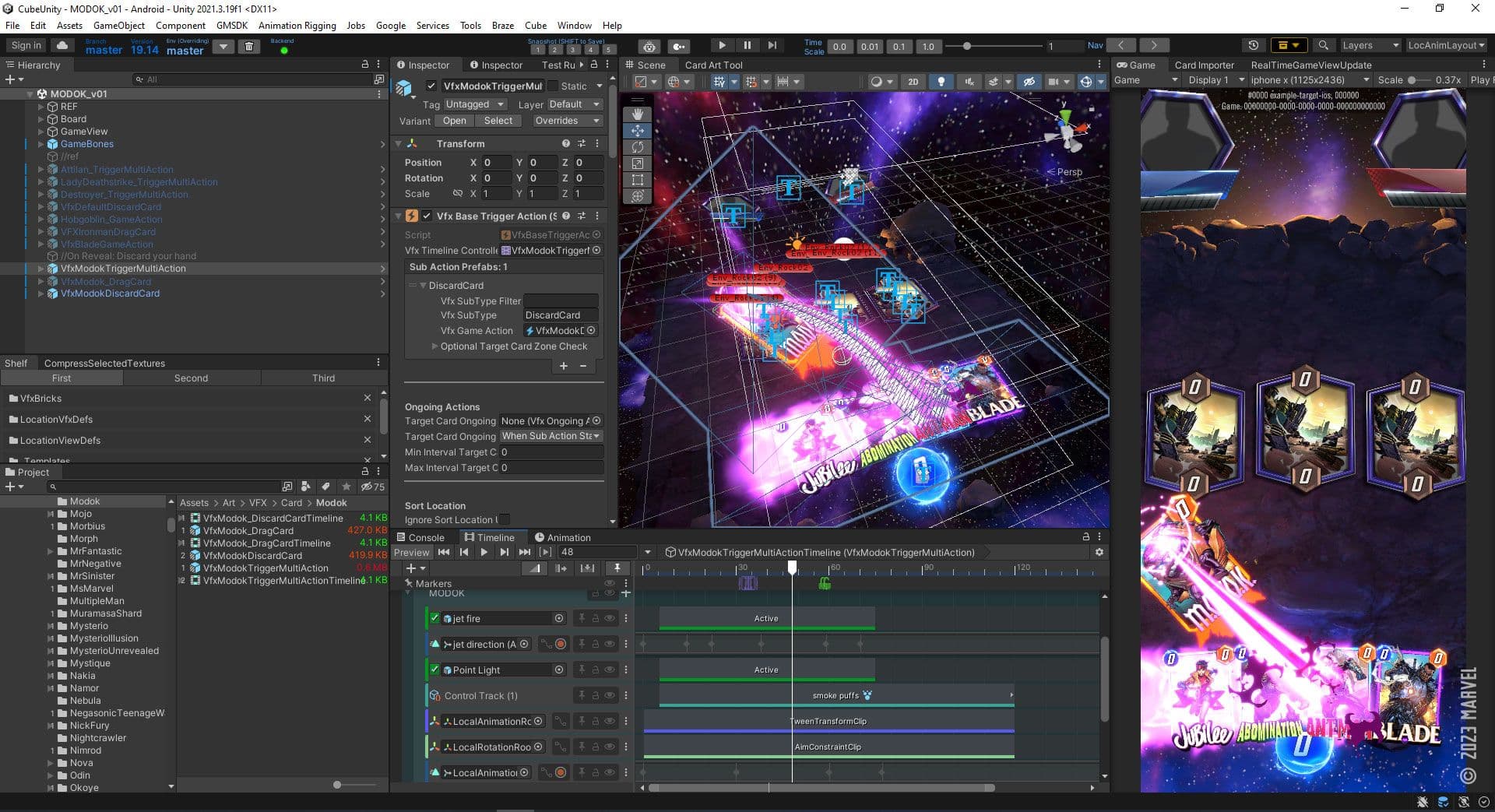
Second Dinner uses Unity’s Addressable Asset System across development to streamline content creation and delivery. Card art and VFX are organized into AssetBundles with local and remote tags, which artists can do independently using CAT.
“We trained our artists and set up good defaults. They create groups and drag in the assets they want. Some of it is automated, and there is a learning curve, but it’s been powerful,” says lead technical artist Kyle Harrison.
For PC builds, local assets ship together, but mobile builds are configured to load and unload remote assets dynamically at runtime to keep downloads small. “For a content-driven game like ours, this kind of system is absolutely required,” says Dave Reed, principal software engineer.
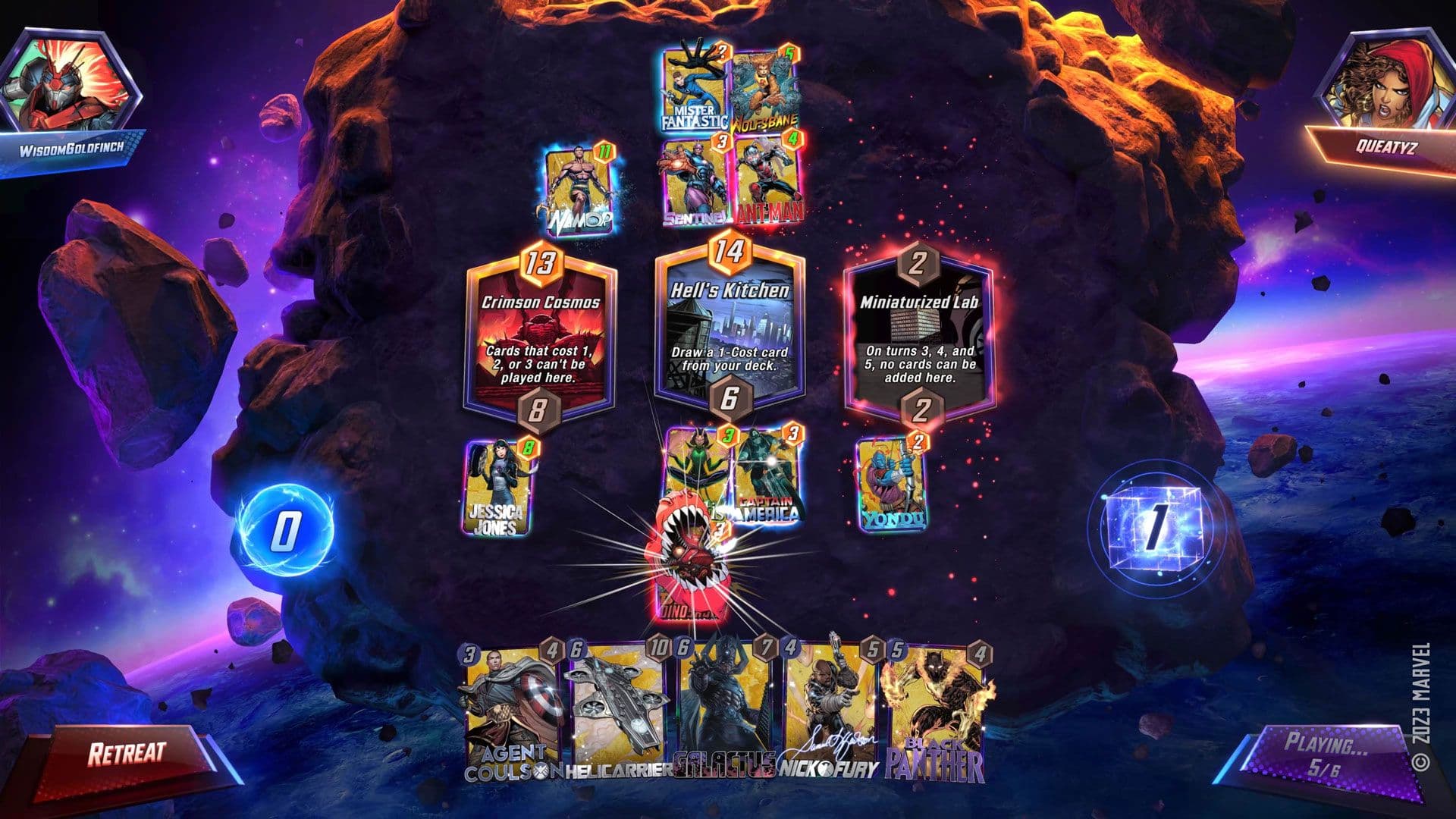
Addressables also help optimize build creation with Build Automation from Unity DevOps. When specific cards need updates, they’re combined into an AssetBundle and pushed into their own build for testing, without needing to recompile the entire project.
Second Dinner’s pod teams work on multiple concurrent initiatives, each with platform-specific build and testing needs. With Build Automation, they push an average of 30 multiplatform builds per day, and they don’t need to maintain an expensive in-house build infrastructure. “Build Automation has been a gamechanger,” says VP of engineering Aaron Brunstetter. “It does the work of two or three full-time engineers.”
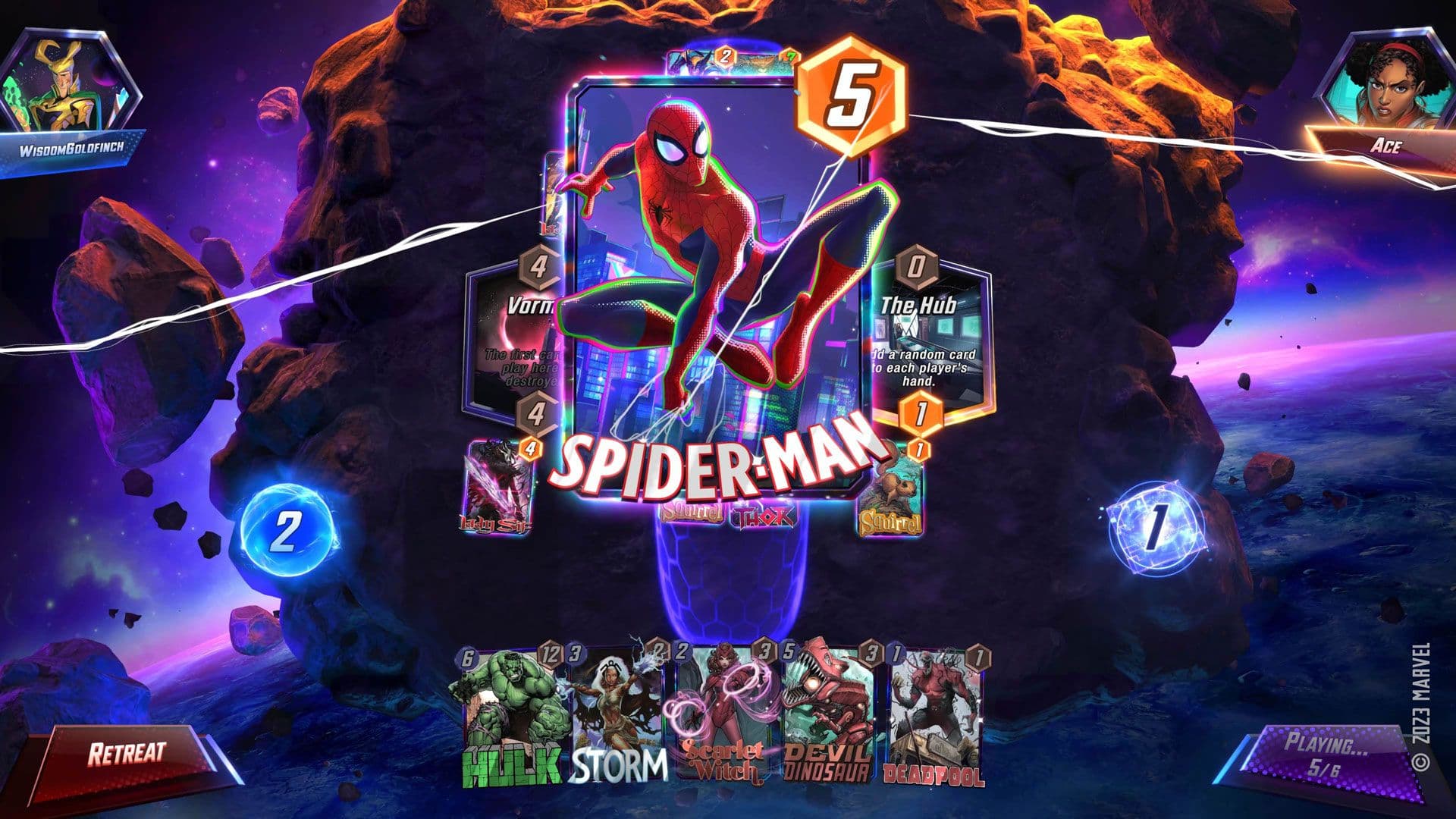
Harrison shares how Build Automation makes it more efficient to continuously test MARVEL SNAP’s performance on mobile: “I can push a build, pull to a device, connect through a VPN, and look at things like worst-case scenarios, how the game’s performing as it downloads assets, and so on.”
“It’s a productivity tool as well as a build tool,” adds Reed. “I can push a change and start building for three, four target platforms while I go and work on something else. It doesn’t have to dominate my machine, and I don’t have to switch platforms or have multiple enlistments going on, which is super convenient.”
Second Dinner launches a new version of MARVEL SNAP every month using Unity Cloud Content Delivery (CCD). Engineers pull from GitHub, create a build with Build Automation, review and optimize as necessary, then push the update live via CCD.
“Every time we make a build, it’s all hooked up to push our content to the cloud in the right way, in the right place. It’s a huge time saver,” says Brunstetter. “We make a deployment branch, it automatically builds, and that content gets propagated around the world for players to download.”
“CCD also deduplicates assets across all of our builds. It’s a very efficient system that’s just handled for us,” says Reed. “We didn’t have to do anything to make it possible.”
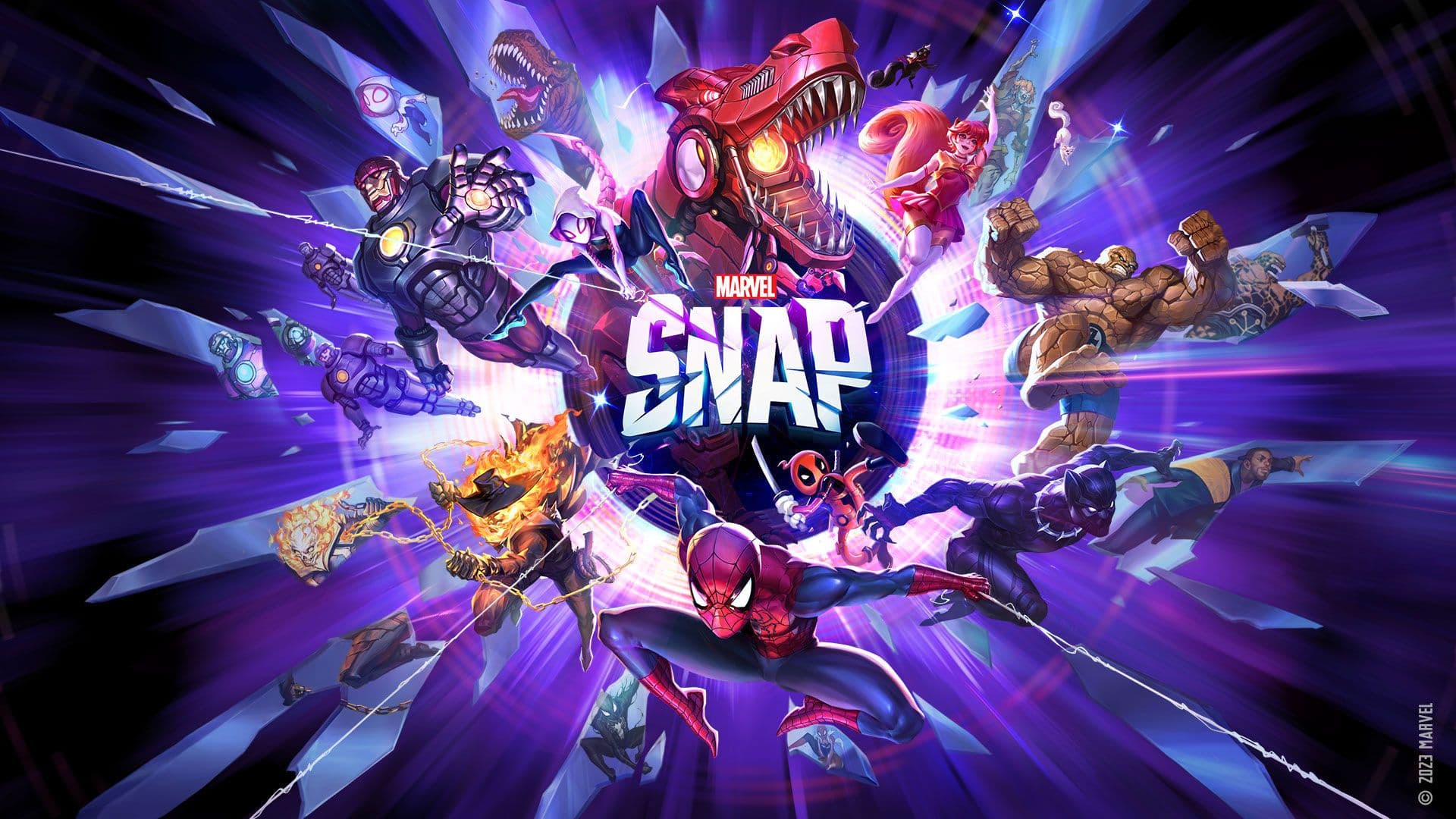
MARVEL SNAP is a remarkable success story from a lean team with big ambitions. Through strategic use of Unity’s extensible Editor, Addressables, and DevOps and backend solutions from UGS, Second Dinner keeps their team small and focused on delivering new cards and gameplay to millions of players – and they’re just getting started.
“It’s important not just to launch a great game, but to keep players coming back for months and years and decades,” says Brode. By building a team that can focus 100% on making MARVEL SNAP a great live experience for players on PC and mobile, Second Dinner is well on their way to achieving their mission.
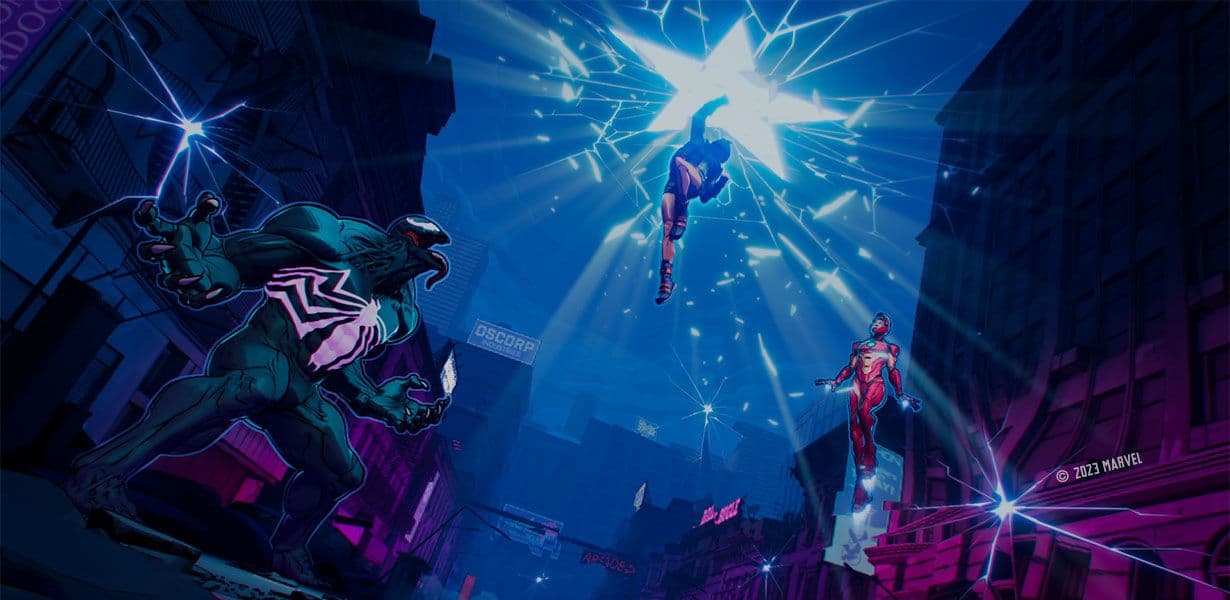
Create games for any platform with flexible Unity tools that adapt to your unique vision, then expand and engage your player base with Unity Gaming Services.